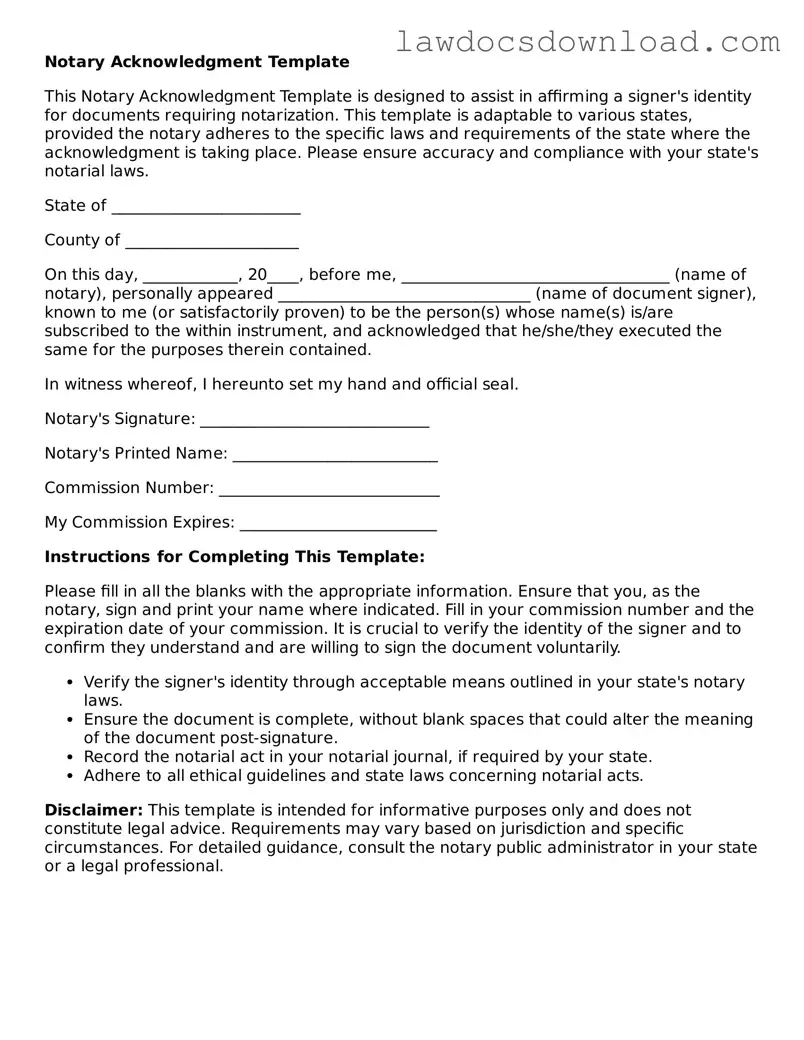The Notary Acknowledgement form is a critical document that verifies the signer's identity and willingness to sign a document in a conscious and voluntary manner. However, commonly observed mistakes can compromise its validity or delay processes. Being aware of these mistakes is essential for anyone involved in the signing of official documents.
One of the frequent errors is incomplete information. Signers often overlook sections such as the date, their full legal name, or even the notary public's jurisdiction. This omission can render the form invalid, requiring a new acknowledgment form to be completed and notarized.
Another mistake revolves around mismatched names. The name on the acknowledgement must match the identification document presented to the notary and the name on the document being notarized. Discrepancies, even minor, may lead to questions regarding the identity of the signer and the legitimacy of the acknowledgment.
A crucial yet common mistake is the failure to sign in the presence of the notary. The essence of notarization is the verification of signatures in real-time. Signing beforehand undermines the process, leading to the notary's inability to certify the signature.
Notaries themselves can also make errors, such as forgetting to affix their seal. The seal, alongside the signature, is a foundational component of the notary’s certification. Its absence can void the acknowledgment, requiring parties to go through the process again.
Skipping the venue section, which indicates the location (state and county) where notarization takes place, is another oversight. This information is vital, as it provides context and jurisdictional validity to the acknowledgment. A missing venue may lead to questions regarding the authority under which the notarization was performed.
Some signers and notaries misinterpret the need for a witness. While notaries act as official witnesses, certain documents or jurisdictions may require additional witnesses during the signing. Failing to meet this requirement can nullify the document's effectiveness.
Altering the form after it has been completed and notarized is a grave mistake. Any changes made post-notarization can invalidate the document, necessitating a re-do of the entire process.
The misunderstanding of the capacity or title section, where the signer should indicate their role if signing on behalf of an entity, leads to issues. When this section is filled incorrectly or left blank, it can cast doubt on the signer’s authority to sign.
Utilizing a notary public who is not in good standing is a more rare but significant error. A notary whose certification has expired or has been revoked cannot legally perform notarial acts. Verification of the notary's current standing is essential before proceeding.
Lastly, overlooking the need to review and verify the completed form before finalizing can lead to missed errors. It is crucial for all parties to double-check the acknowledgment form for completeness, accuracy, and compliance with relevant laws and standards.
Averting these mistakes requires attention to detail and an understanding of the notarization process. By ensuring the Notary Acknowledgement form is filled out correctly and completely, signers and notaries can prevent unnecessary delays and uphold the integrity of the document being notarized.
